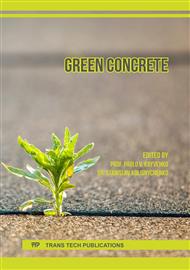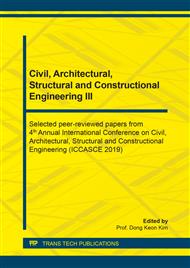p.3
p.12
p.20
p.25
p.30
p.35
p.41
p.49
Strength Possibilities on Fly ash Based Interlock Pavers
Abstract:
Interlocking Concrete Block Pavement (ICBP) poses as the most suitable alternative to traditional pavement construction techniques. This is because of the increased advantages in countries wherein durability, and operational or environmental constraints limit the efficiency of the conventional process. The construction industry everywhere faces problems and significant challenges including manpower, quality of productivity, preservation of the environment, mass transportation, water management, raw materials, durability and design life of construction products, chemical resistance, etc. The increased expense on the raw materials for construction is the primary focus of the study. The study aims to search for suitable alternatives that would allow sustainable development. The study emphasizes on the rising costs of construction materials and the necessity to work towards sustainability, alternative construction techniques and materials. Indigenous production of interlocks with mineral admixtures raises the potential applicability of the interlock pavers. To enhance the strength property and keeping sustainability in point of view, fly ash is used as a mineral admixture and partially replaced with cement in various proportions like 0%, 5%, 10%, 15%, 20%, 25%, 30% and 35%. Fourty eight interlock concrete paver blocks were cast and compressive strength for all specimens was calculated and later compared. A notable rise in the strength of the interlock pavers was observed at 15% and 20% replacement levels with fly ash. The optimum level for replacement was determined as 20% of the fly ash.
Info:
Periodical:
Pages:
12-19
Citation:
Online since:
April 2020
Authors:
Price:
Сopyright:
© 2020 Trans Tech Publications Ltd. All Rights Reserved
Share:
Citation:



